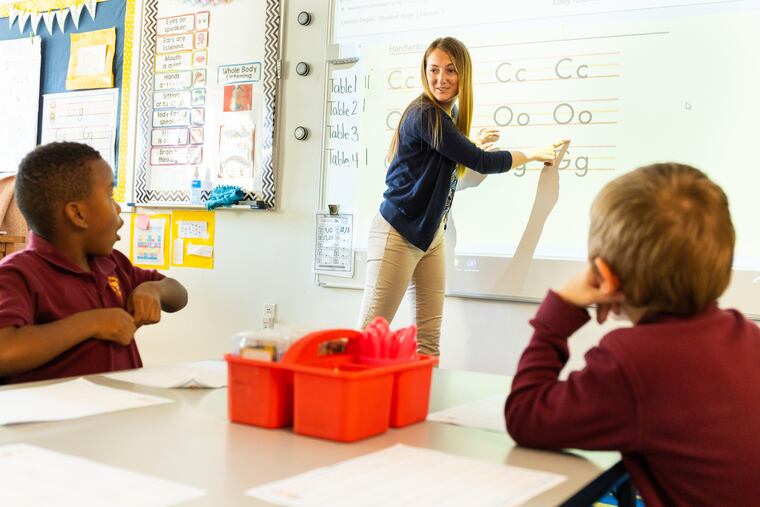Common Core school standards keep failing, but they don’t have to | Opinion
Why are children in the U.S. still not learning how to read well?

Why aren’t our children learning to read? At its debut, the Common Core gave hope that we could improve the reading, writing, and math outcomes of American children being outpaced by their international peers. The Common Core State Standards Initiative was introduced in 2009 by a bipartisan group of governors, experts, and philanthropists, and supported by then-Secretary of Education Arne Duncan. Originally adopted by more than 40 states, the Common Core aimed to create shared standards, including universal goals for mathematics and English language arts.
Ten years into these standards, not a whole lot has changed for our students. The 2018 Program for International Student Assessment (PISA) reported that U.S. students have shown no statistically significant changes since 2000, and have improved only in overall global rankings because other countries have declined, not because our scores improved. In Pennsylvania, only 40% of fourth graders are reading at a proficient level, just slightly better than the national average of 35%.
While there isn’t one single reason why Common Core hasn’t affected literacy outcomes as significantly as hoped, a glaring shortcoming is the inefficient way students are taught to read.
We have not done enough to educate our teachers, school leaders, and policymakers about what it actually takes for a child to learn to read. Our youngest readers — in prekindergarten through second grade — need reading instruction rooted in science to build a foundation. By the time students leave third grade they are no longer learning to read, but reading to learn. If they do not have the basic skills to break the code, they will struggle to acquire vocabulary and background knowledge from text, and to comprehend more complex text and ideas.
The science of reading has existed for the better part of two decades but has not been consistently incorporated into teacher preparation programs and, therefore, most classrooms. Science-based reading includes instructional approaches found to build the brain pathways, identified through imaging studies, that promote reading skills. In 1986, Philip Gough and William Tunmer offered a simple way to explain the science of reading as a math equation: Decoding x language comprehension = reading comprehension.
Let’s break this equation down. For people to understand what is being read, they must be able to read the words off the page — which is decoding — and derive meaning from those words and sentences. If children cannot read through a word or sentence at a basic level, and understand what that language means to say, they will not be able to understand written text.
However, what traditionally plays out in classrooms across America is what many educators call a balanced literacy approach: Children learn phonics, or sounding out letters and words, isolated from comprehension. They are encouraged to use separate “skills and strategies” to understand the meaning, such as finding the “main idea” of a text and making inferences — like identifying words they cannot read by looking at the first letter and making a best guess from context. Teachers often believe they are aligning their instruction with best practices, but have not been educated on the science of reading to determine whether their approaches truly work.
These approaches do not actually teach children to comprehend text. Instead, schools should support professional development that builds teachers’ knowledge of the science of reading. Educators should use a structured literacy approach that integrates direct, explicit, and systematic phonics instruction with language development and building background knowledge, direct vocabulary instruction, and understanding of sentence structure and word choice.
Some institutions have figured this out. Mississippi, once the worst state nationwide for fourth-grade reading scores, is now on par with the national average. Since 2013, Mississippi’s scores for fourth graders have risen by 10%, in part thanks to the state committing to training teachers in science-backed reading strategies.
Instead of scratching our heads about why Common Core results aren’t showing more progress, let’s adjust the way we educate our youngest readers, using an approach proven to provide students with a literacy foundation that will serve them throughout their lives.
Dr. Pam Greenblatt is head of lower school at the Haverford School, a pre-K-12 boys’ school, where she developed a structured literacy program and design thinking curriculum. Nichole Pugliese is director of the Enrichment and Learning Center at the Haverford School and a graduate of the School of Health Studies and Education at St. Joseph’s University.